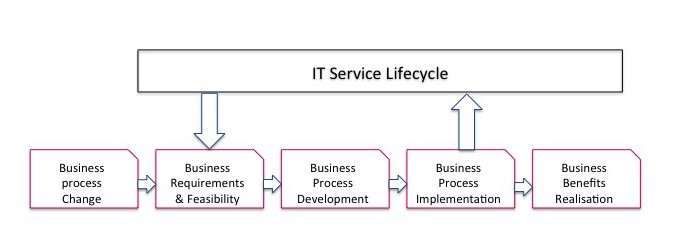ITIL Service Design Principles
ITIL Service Design
IT Service Design is a part of the overall business change process. This business change process and the role of IT are illustrated in the figure below


One accurate information has been obtained on what is required and signed off, with regard to the changing needs of the business, the plan for the delivery of a service to meet the agreed need can be developed. The role of the Service Design stage within this overall business change process can be defined as:
“The Design of appropriate and innovative IT services, including their architectures, processes, policies, and documentation, to meet current and future agreed business requirements”
Service Design Principles
It is important that the right interfaces and links to the design activities exist. When designing new or changed services, it is vital that the entire Service Lifecycle and ITSM processes are involved from the outset. Often difficulties occur in operations when a newly designed service is handed over to live running at the last minute. The following are actions that need to be undertaken from the outset of a Service Design to ensure that the solution meets the requirements of the business:
- The new service solution should be added to the overall Service Portfolio from the concept phase, and the service Portfolio should be updated to reflect the current status through any incremental or iterative development. This will be beneficial not only from the financial perspective but also from all other areas during design.
- As part of the initial service/system analysis, there will be a need to understand the Service Level Requirements (SLRs) for the service when it goes live.
- From the SLRs, the Capacity Management team can model this within the current infrastructure to ascertain if this will be able to support the new service. If time allows, the results from the modelling activities can be built into Capacity Plan.
- An initial Business Impact Analysis and risk assessment should be conducted on services well before implementation as invaluable input into IT services Continuity Strategy, Availability Design, and Capacity Planning.
- The Service Desk will need to made aware of new services well in advance of the live operation to prepare and train Service Desk staff and potentially IT customer staff.
- Service Transition can start planning the implementation and build into the change schedule.
- Supplier Management will need to be involved in procurement is required for the new service.
